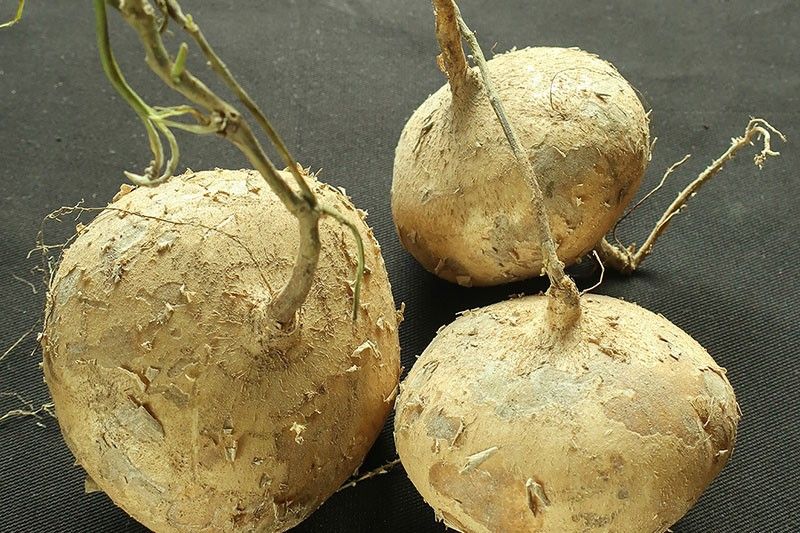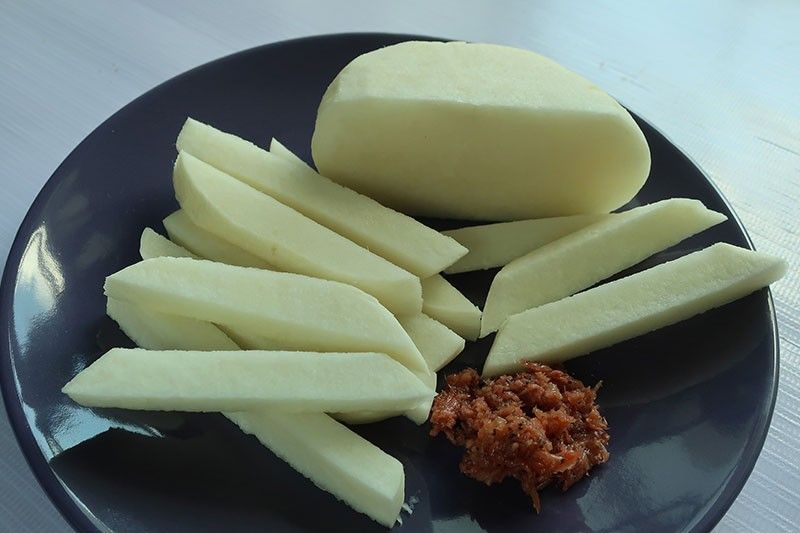Root vegetable from Mexico: Singkamas season is on

MANILA, Philippines — Seeing a lot of Singkamas being sold in the market and on the roadside lately? This is because this root vegetable is in season once again.
Known as Jicama or Mexican turnip, the Singkamas “fruit” has a flat roundish shape of white flesh covered with a thin, golden brown earthy skin. It goes by the scientific name Pachyrhizus erosus and is a native Mesoamerican vine that belongs to the pea family.
Its edible root is naturally sweet and is often eaten raw as a snack in the Philippines. Just peel off the skin with the assistance of a knife, cut into thin slices or French fries-type strips and eat as is or with bagoong (fermented shrimp paste), or lightly sprinkle with salt and bite away.
Also answering to the names Chinese potato, Ahipa, Saa got, Mexican potato and sweet turnip, the Jicama originated in Mexico and Central America and was introduced to Asia by the Spanish in the 17th century. The Spanish people spread its cultivation to the Philippines, where it took on the name Singkamas from the Nahuatl word Xicamatl, and then it was brought to China and Southeast Asia, where it now has a wide range of culinary uses.
In the Philippines, apart from being eaten as is as a snack, Singkamas is used as an ingredient in fresh lumpia, siomai, and meatballs. In Singapore, Malaysia and Indonesia, it has become an important ingredient in salads, such as Rojak (a spicy fruit salad) and Yusheng (an auspicious salad that is tossed on Chinese New Year to bring luck and good fortune for the coming year).

Singkamas is healthy because it is 90% water in its raw form and also contains 9% carbohydrates, 1% protein, and negiligible fat. The latter is the reason why it is often used as an extender for food that requires fat or the mouthfeel and texture of fat, such as siomai and meatballs.
It is also low in calories, only 38 calories per 100-gram Singkamas, and is a good source of Vitamin C. Its high water content, meanwhile, can keep you properly hydrated or supplement your water intake to meet your daily requirement, especially during the hot days of summer.
So, now that Singkamas is in season (from March to May), take advantage of the season’s bounty in ways you truly enjoy.
RELATED: Chefs share ways to enjoy Indian Mangoes, plus Burong Mangga recipe





















